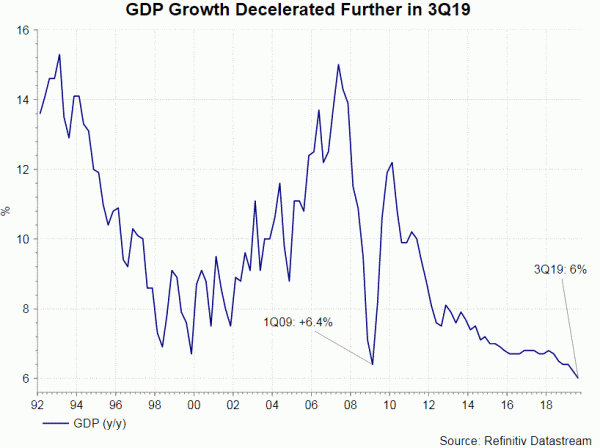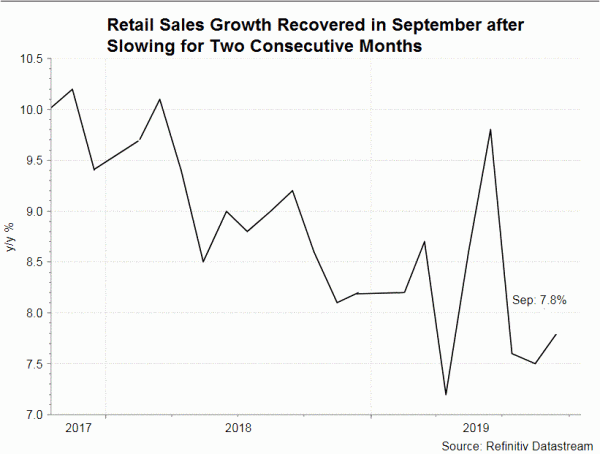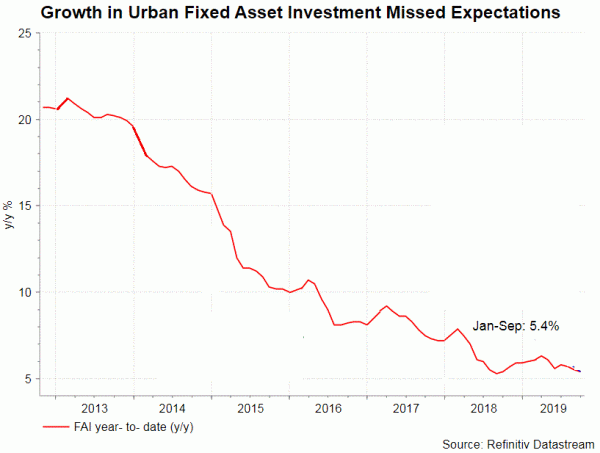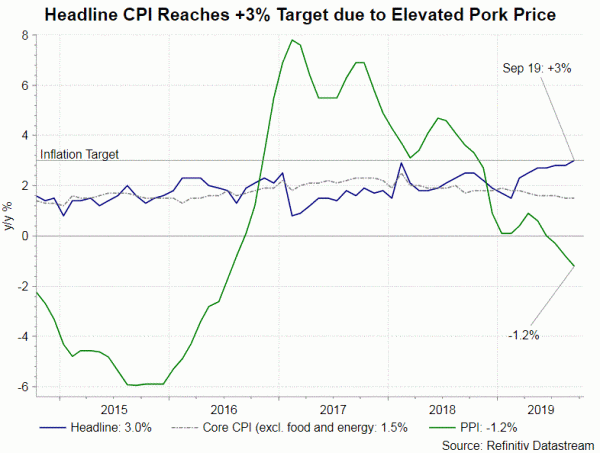The market was surprised to see that PBOC left the loan prime rate (LPR), its latest benchmark rate, unchanged in October following two consecutive cuts in the prior two months. Yet, this came in line with our expectations that elevation inflation could retrain PBOC from extending monetary easing.
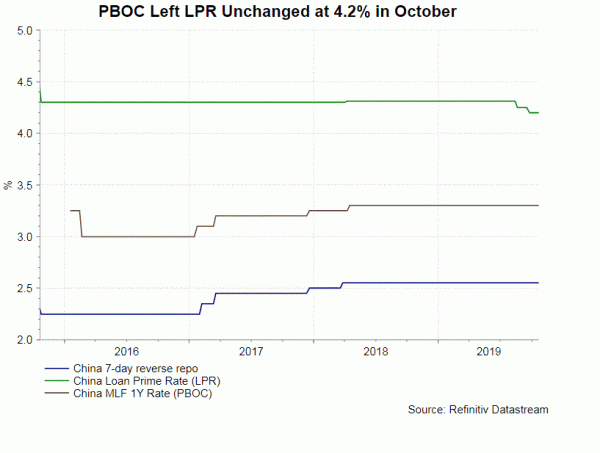 Recall that on August 17, PBOC announced that it would set the LPR according to the medium lending facility (MLF) rate. From August onwards, PBOC will fix the LPR on the 20th of each month, using quotations submitted by 18 banks. The central bank embarked the new mechanism by cutting the one- year LPR by -6 bps to 4.25% in August. This was followed by a -5 bps cut to 4.2% in September. Contrary to market expectations of further reduction, the LPR stayed in unchanged in October. The 5-year LPR has been steadied at 4.85%, since the -5 bps cut in August.
Recall that on August 17, PBOC announced that it would set the LPR according to the medium lending facility (MLF) rate. From August onwards, PBOC will fix the LPR on the 20th of each month, using quotations submitted by 18 banks. The central bank embarked the new mechanism by cutting the one- year LPR by -6 bps to 4.25% in August. This was followed by a -5 bps cut to 4.2% in September. Contrary to market expectations of further reduction, the LPR stayed in unchanged in October. The 5-year LPR has been steadied at 4.85%, since the -5 bps cut in August.
China’s growth momentum has not improved over the past month. GDP growth moderated to 6% y/y in 3Q19. This came in worse than expected and marked the weakest growth in over 27 years. Growth in industrial production improved to +5.8% y/y in September. Yet, this was compared with a decades-low growth of +4.4% in August. Retail sales expanded +7.8%, after decelerating over the past two months. Urban fixed asset investment grew +5.4% y/y in the first 9 months of the year. This reading came in weaker than consensus.
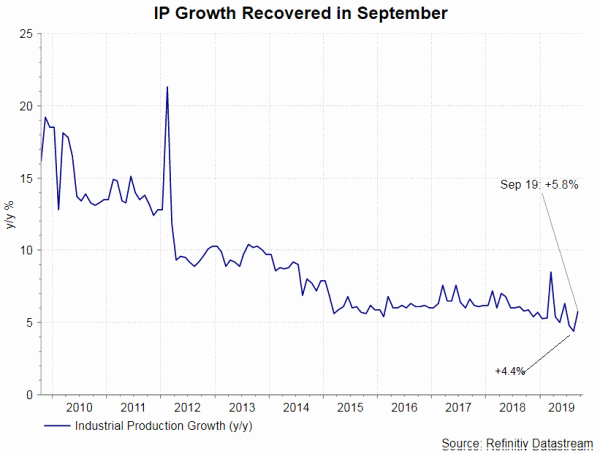 Some suggested that China might pause monetary easing amidst improvement in September data and a ray of light in trade negotiations with the US. We believe both explanations are not justified. As shown above, while some indicators for September showed improvement, the recovery was from a very weak August. Optimism over trade negotiations has lifted Chinese yields. Maintaining the policy rate unchanged could send yields higher as the market expects a less accommodative central bank. This could exacerbate the country’s economic slowdown.
Some suggested that China might pause monetary easing amidst improvement in September data and a ray of light in trade negotiations with the US. We believe both explanations are not justified. As shown above, while some indicators for September showed improvement, the recovery was from a very weak August. Optimism over trade negotiations has lifted Chinese yields. Maintaining the policy rate unchanged could send yields higher as the market expects a less accommodative central bank. This could exacerbate the country’s economic slowdown.
Strong inflation is the key reason for PBOC’s pause. Headline CPI in China rose to +3% y/y in September, reaching PBOC’s target for first time since December 2013. However, this was driven by elevated pork price rather than improvement in household spending. Pork price which soared +69.3% y/y in September, accelerating from a +46.7% increase in the prior month. Core CPI, excluding food and energy, steadied at +1.5% y/y.
Since strong inflation is predominantly driven by pork prices, it depends on how policymakers view this data. They can treat it as transitory factor or a situation that will persist. The government appears not to expect that pork supply, hence pork price, will return to normal in the near-term. therefore, they decided to leave the LPR unchanged this month.
The key question is PBOC’s monetary policy outlook. LRP is just one of PBOC’s policy tools. Indeed, the central bank has been keen on using RRR in adjusting liquidity in the market. Whether the central bank will cut RRR before year-end is closely watched by the market. China’s economic slowdown is expected to worsen as a result of prolonged trade war with the US. We do not expect a reversal will be seen even if a first phase deal in reached in November. We expect PBOC will have no choice but cut the RRR by -50 bps by end of the year.




